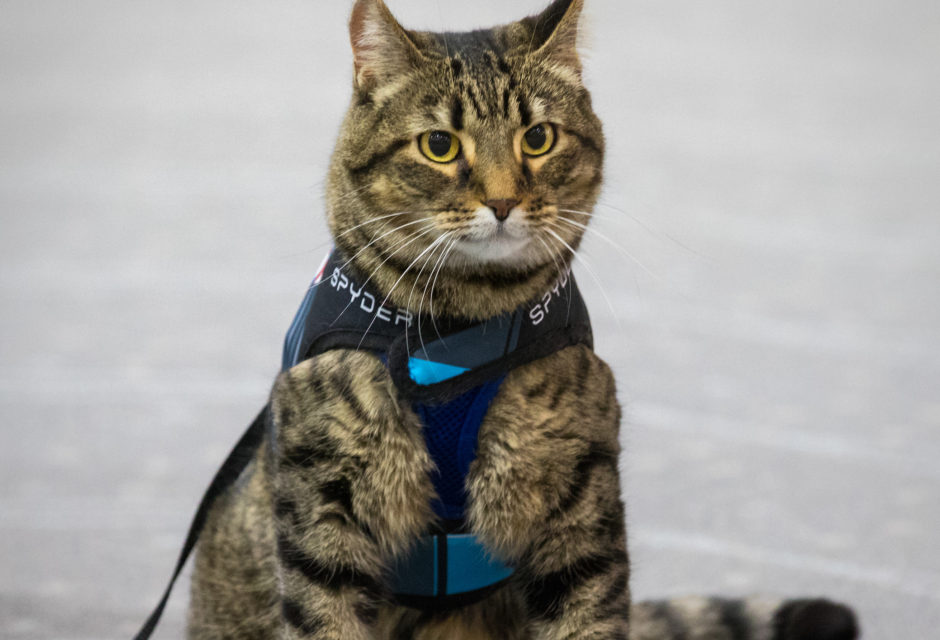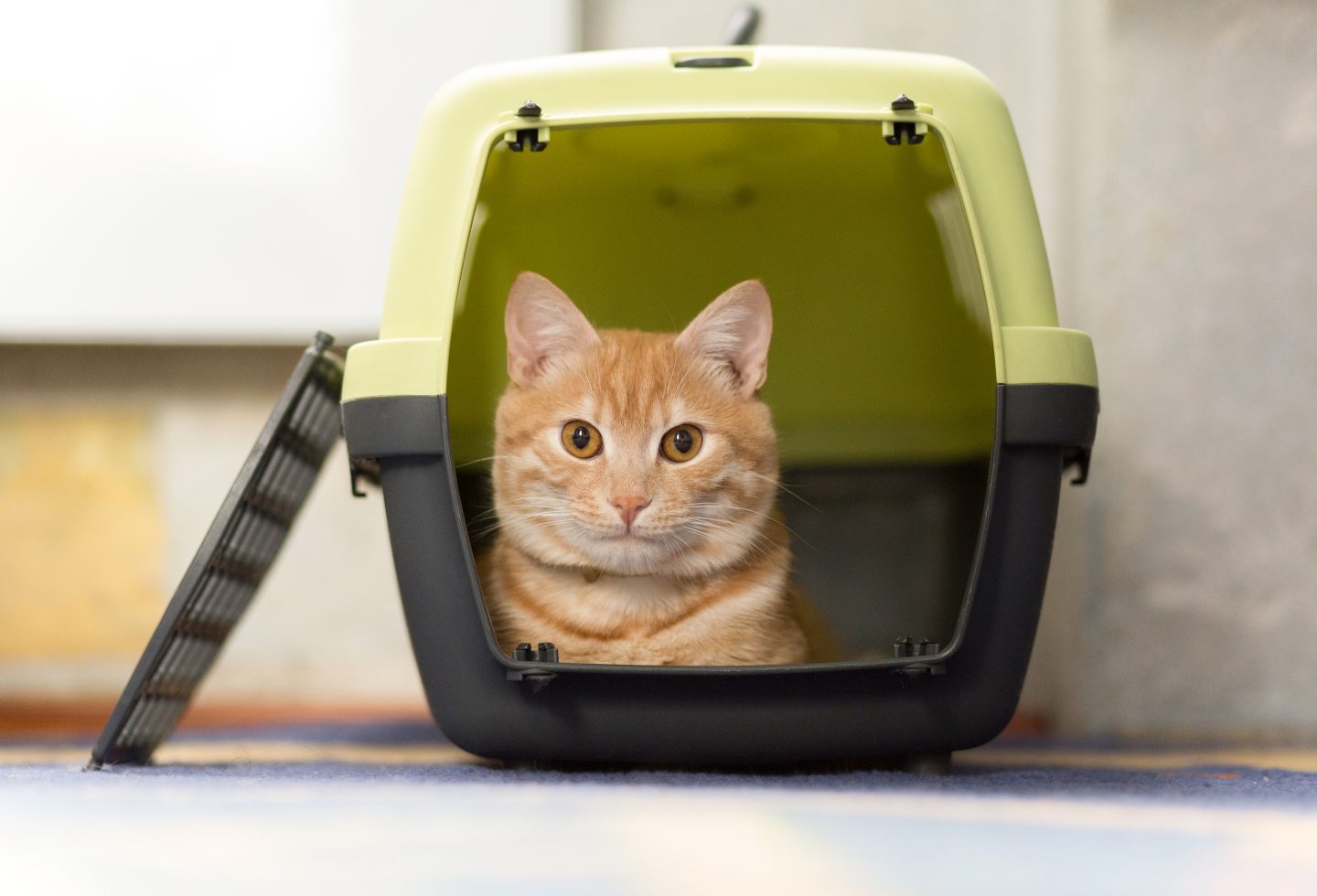
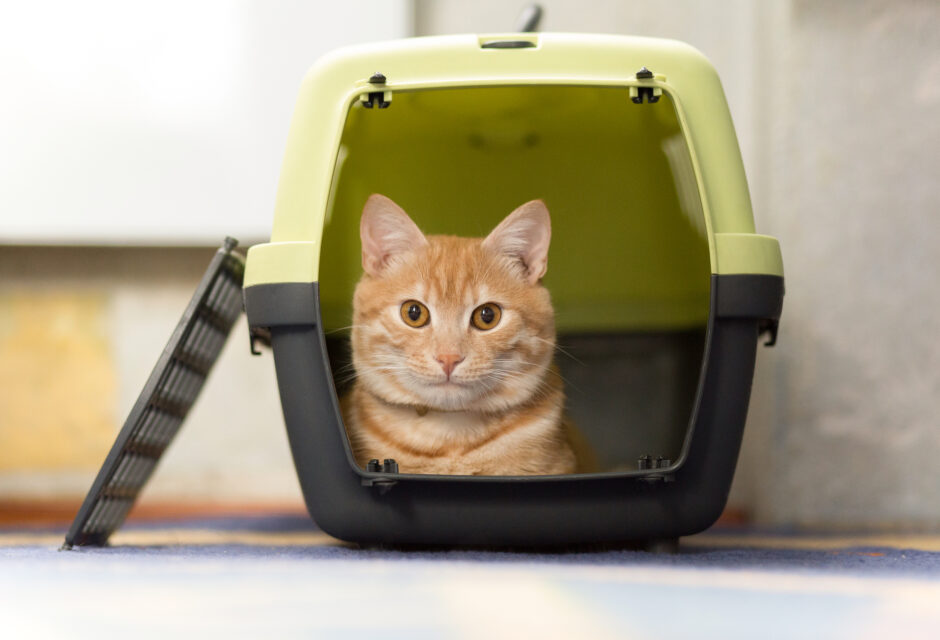
Six Steps for How To Get a Cat In a Carrier With Ease
When you think about it from a cat’s point of view, nothing good ever happens when the carrier comes out of the closet. Its appearance typically means a trip to the veterinary clinic, and we all know how cats tend to feel about that destination. For many cats, the fear starts with just the idea of traveling in the carrier, whether by car, public transportation or just being jostled around as the cat caregiver walks down the street. Quite a few caregivers delay or even avoid trips to the veterinary clinic just because it’s nearly impossible to get the cat in the carrier without the risk of bloodshed. Some owners and cats prefer a backpack instead of a traditional carrier.

Creative Cat Studio./Bigstock
It’s important to be able to get your cat in the carrier for multiple reasons. It’s obviously safer for traveling with your cat, but also, in the case of an emergency or urgent evacuation, you don’t want to be wrestling with a cat in your arms as you leave the house. Being in a carrier is the safest way for your cat to travel and it doesn’t have to be such a nightmare. Here are six steps to get you started on changing your cat’s opinion about it. This won’t happen overnight, but with patience, you can probably get your cat to stop viewing the carrier with such dread.
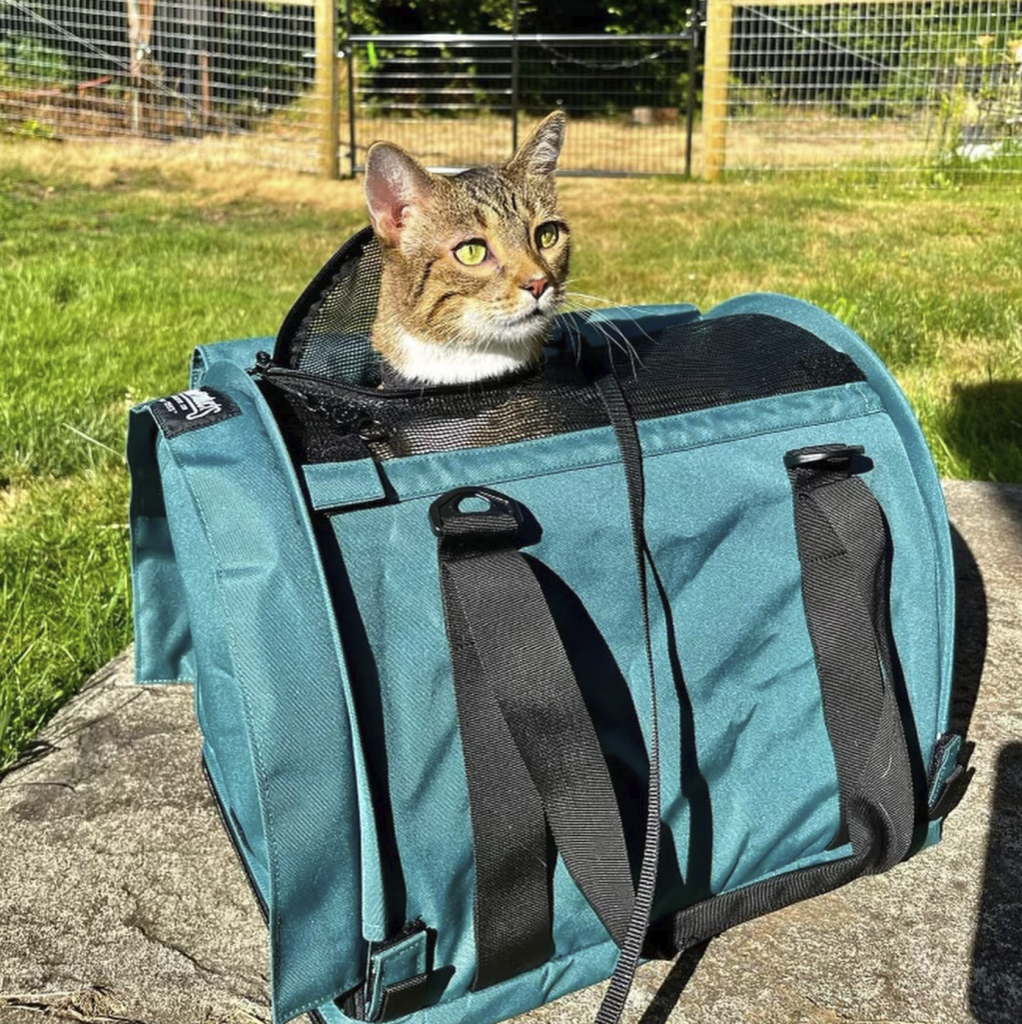
We love the SturdiBag™ Pro 2.0!
Step 1. Leave the Carrier out
Place the carrier in the room and just let it become a constant part of your décor. Your cat will become accustomed to seeing it daily and that will remove much of the fear. It’s also wise to leave the carrier out because that’ll make it easier to grab in case of an emergency.
If you use a plastic kennel-style carrier, you may have to remove the door temporarily to encourage your cat to use the carrier as a bed, especially if he has had negative carrier experiences previously.
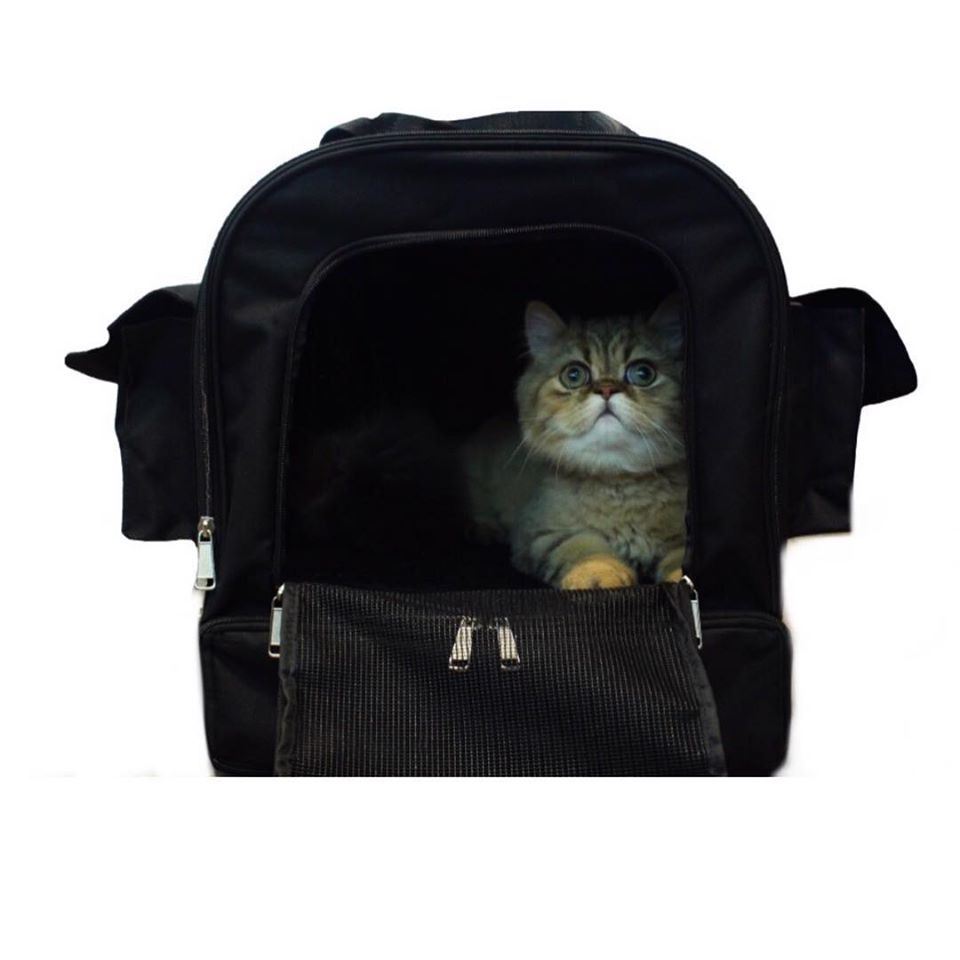
Check out the Kitty Obsession All-In-One Cat Carrier/ Emergency Kit. It has 6 separate compartments for food, water, toys/treats, scooper, trash bags, and portable litter box.
Step 2. Create a Cozy Hideaway
Leave the carrier open and line it with a soft material. This will increase the chances that your cat will eventually view it as a comfy place to nap. For extra scent enticement, use a t-shirt that you’ve worn or a towel you’ve used to line the carrier.
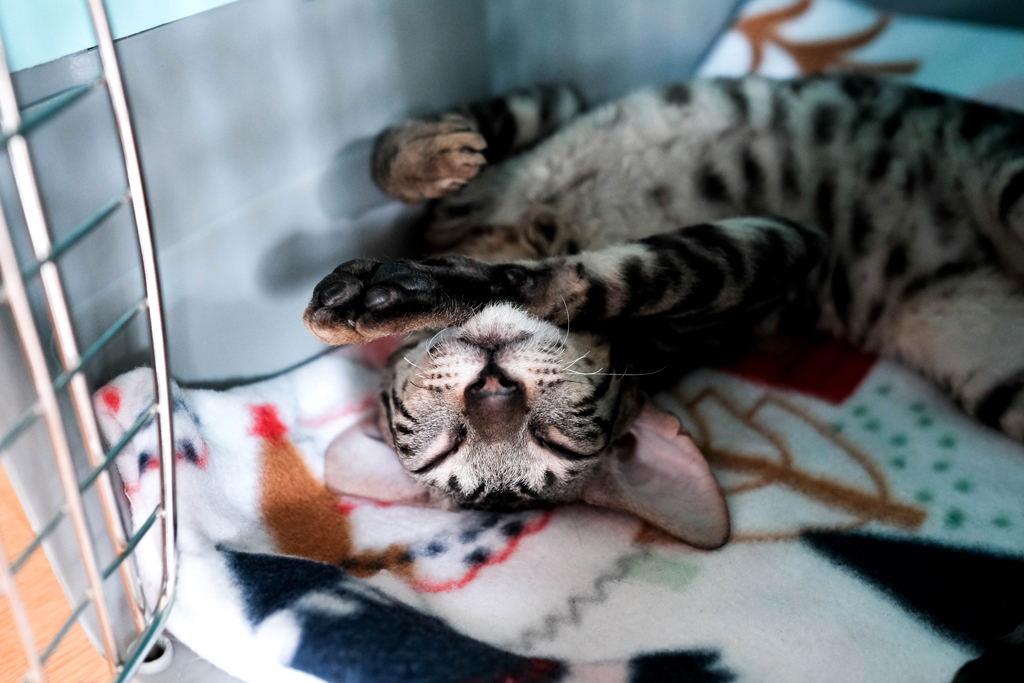
alenaloginova/Bigstock
Step 3. Use the Power of Food and Toys
Carry treats with you so you can periodically toss one near the carrier. Gradually work up to placing a treat right at the entrance of the carrier, on top of the carrier, and eventually inside. You can also feed your cat near the carrier and gradually work up to placing the food bowl in the carrier itself.
Do interactive play sessions near the carrier, especially if you have a cat who is too frightened to approach it in order to retrieve a treat. Start at a safe distance where your cat is comfortable and then very gradually inch closer. Let your cat set the pace on how near he wants to get. As sessions progress, you should notice your cat becoming more at ease in the presence of the carrier.
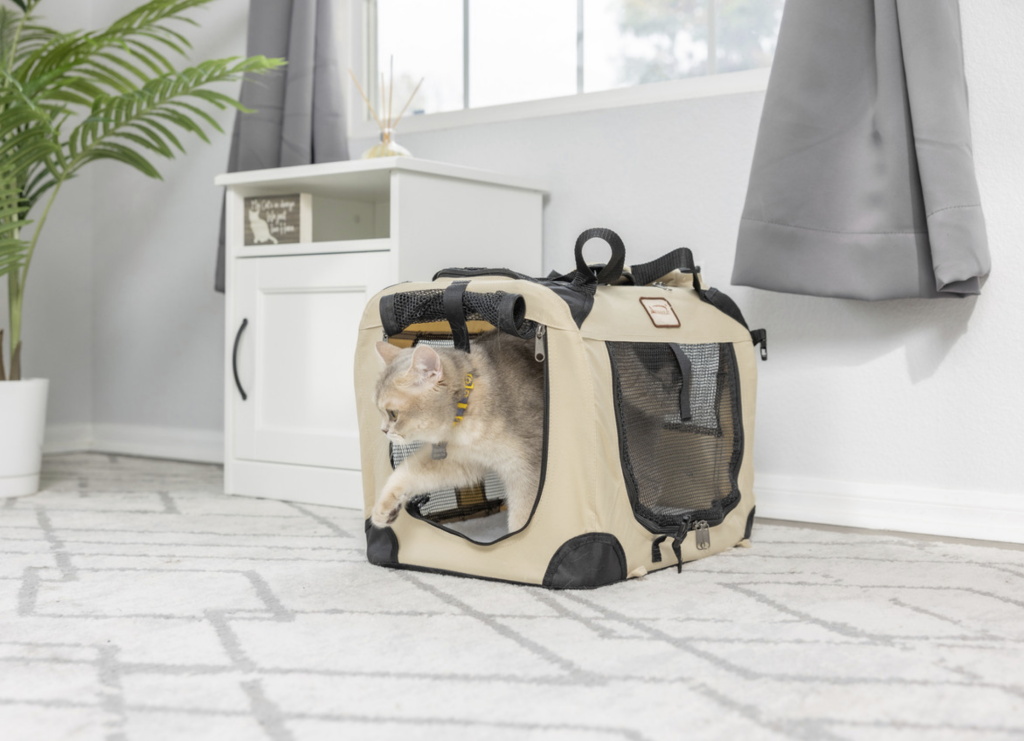
Try the Pet Carrier PC201B from Armarkat!
Step 4. Take Each Step Gradually
Don’t be in a rush to put the cat in the carrier and head out the door. Very often, it’s the travel experience itself that can also upset a cat. Once your cat is comfortable in the carrier, do short sessions of just going out to the car and placing the carrier there without turning the engine on. When your cat is comfortable with that step, you can then start the engine. Work up to short drives around the block and then increase your distance.

krilerg/Bigstock
If you live in an apartment building then the initial sessions should begin with just being out in the hallway, and then in the elevator or stairwell. Remember it’s all about being patient and positive.
If you travel by public transportation, start by getting your cat comfortable with being in the carrier in an outdoor setting and then take a short ride. The more gradual and calm you make the experience, the easier it’ll be for your cat to adjust.
Step 5. Be Invisible and Quiet
No magic involved in this step, just some common sense ideas. If your cat gets upset or car sick during travel, cover the carrier with a light towel so he doesn’t see the scenery going by in confusing blur. For maximum safety in a car, place the carrier on the floor behind the passenger seat. This is recommended for safety in case of a crash and it’s also helpful to reduce how much fast-moving scenery your cat has to endure.
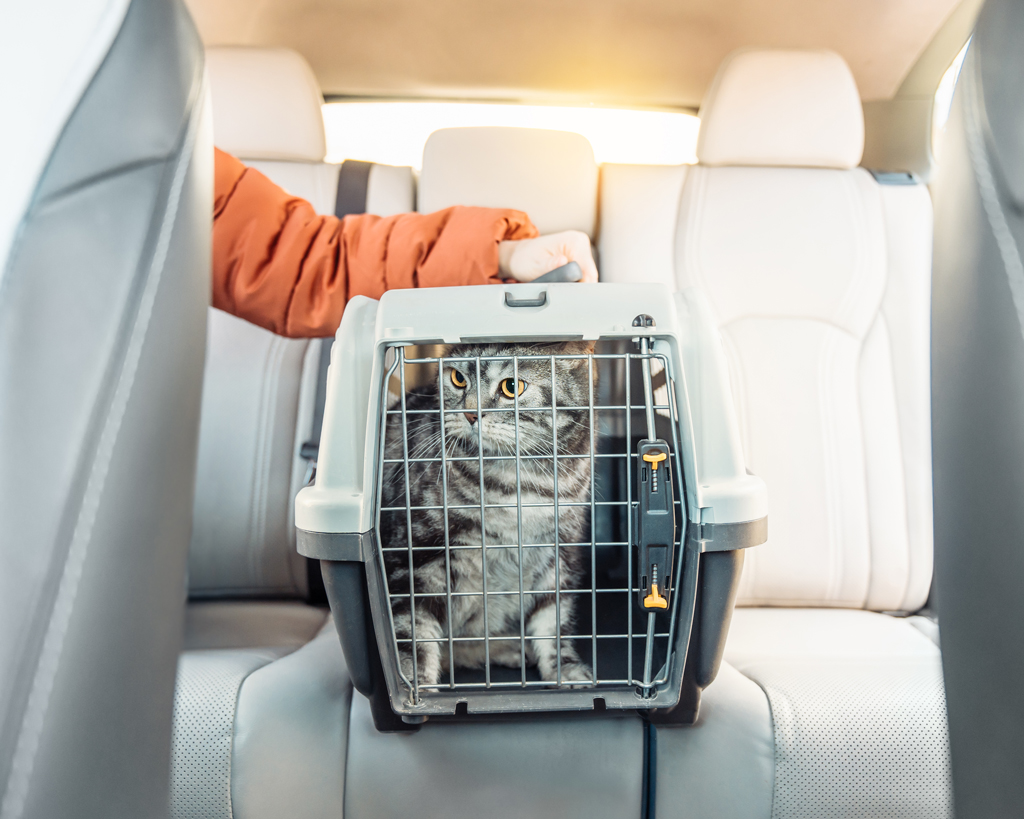
Varavin88/Bigstock
When in the car, don’t play loud music. Choose a station that offers classical or peaceful music to help buffer unfamiliar road noises.
At the veterinary office, it’s also helpful to keep the cat carrier covered. Being able to hide is a valuable coping mechanism for cats when it comes to stress or fear.
Step 6. Clean the Carrier

mPh2014/Bigstock
This is a step that’s often overlooked after a trip to the veterinary clinic. Take the carrier apart and clean it to remove all smells from the clinic. This will not only be helpful for the cat who went to the veterinarian but will be much appreciated by any other cats in the home as well. After washing, replace it with a fresh towel or t-shirt and set the carrier back in its position to serve as a napping hideaway again.
Pam Johnson-Bennett
Certified Cat Behavior Consultant & Best-Selling Author

Pam is considered a pioneer in the field of cat behavior consulting, having started her career in 1982. Some of her books have been used as textbooks for behavior courses and she has influenced many practicing in the field today. Her book, Think Like a Cat, has been referred to as the cat bible.
Pam owns Cat Behavior Associates, located in Tennessee. She lives with her husband, two children, a rescued cat, and a rescued dog.
Join the newsletter and never miss out on cat content again!
"*" indicates required fields
By clicking the arrow, you agree to our web Terms of Use and Privacy & Cookie Policy. Easy unsubscribe links are provided in every email.









